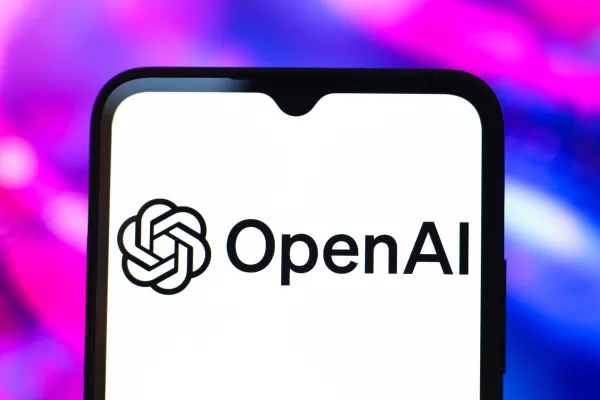OpenAI’s o3 AI model scores lower on a benchmark than the company initially implied

Why Benchmark Discrepancies Matter in AI
When it comes to AI, numbers often tell the story—and sometimes, those numbers don’t quite add up. Take OpenAI’s o3 model, for instance. The initial claims were nothing short of jaw-dropping: o3 could reportedly handle over 25% of the notoriously tough FrontierMath problems. For context, the competition was stuck in the low single digits. But fast-forward to recent developments, and Epoch AI—a respected research institute—has thrown a wrench into the narrative. Their findings suggest that o3’s actual performance hovers closer to 10%. Not bad, but certainly not the headline-grabbing figure OpenAI initially touted.
What’s Really Going On?
Let’s break it down. OpenAI’s original score was likely achieved under optimal conditions—conditions that might not be exactly replicable in the real world. Epoch pointed out that their testing environment might differ slightly from OpenAI’s, and even the version of FrontierMath they used was newer. That’s not to say OpenAI misled anyone outright; their initial claims aligned with internal tests, but the disparity highlights a broader issue. Benchmarks aren’t always apples-to-apples comparisons. And let’s face it, companies have incentives to put their best foot forward.
The Role of Transparency
This situation brings up an important question: How transparent should AI companies be when sharing results? While OpenAI didn’t outright lie, their messaging did create expectations that weren’t fully met. It’s a delicate balance. Companies want to showcase their advancements, but they also need to be honest about what those numbers really mean. As AI becomes increasingly integrated into everyday life, consumers and researchers alike will demand clearer answers.
Other Controversies in the Industry
Benchmarking snafus aren’t unique to OpenAI. Other players in the AI space have faced similar scrutiny. Back in January, Epoch found itself in hot water after accepting undisclosed funding from OpenAI just before o3’s announcement. Meanwhile, Elon Musk’s xAI got flak for allegedly tweaking their benchmark charts to make Grok 3 look better than it actually was. Even Meta, one of the tech giants, recently admitted to promoting scores based on a model that wasn’t publicly available. Clearly, the race to dominate headlines is heating up—and not everyone’s playing fair.
Looking Ahead
While these controversies might seem disheartening, they’re actually a sign of progress. As the AI landscape matures, so too does the discourse around accountability. Consumers and researchers are pushing for greater transparency, and that’s a good thing. It forces companies to be more thoughtful about how they present their achievements—and ensures users don’t get swept up in unrealistic hype. In the end, the goal shouldn’t be to game the numbers—it should be to build models that genuinely advance the field.
Related article
 Nonprofit leverages AI agents to boost charity fundraising efforts
While major tech corporations promote AI "agents" as productivity boosters for businesses, one nonprofit organization is demonstrating their potential for social good. Sage Future, a philanthropic research group backed by Open Philanthropy, recently
Nonprofit leverages AI agents to boost charity fundraising efforts
While major tech corporations promote AI "agents" as productivity boosters for businesses, one nonprofit organization is demonstrating their potential for social good. Sage Future, a philanthropic research group backed by Open Philanthropy, recently
 Top AI Labs Warn Humanity Is Losing Grasp on Understanding AI Systems
In an unprecedented show of unity, researchers from OpenAI, Google DeepMind, Anthropic and Meta have set aside competitive differences to issue a collective warning about responsible AI development. Over 40 leading scientists from these typically riv
Top AI Labs Warn Humanity Is Losing Grasp on Understanding AI Systems
In an unprecedented show of unity, researchers from OpenAI, Google DeepMind, Anthropic and Meta have set aside competitive differences to issue a collective warning about responsible AI development. Over 40 leading scientists from these typically riv
 ChatGPT Adds Google Drive and Dropbox Integration for File Access
ChatGPT Enhances Productivity with New Enterprise Features
OpenAI has unveiled two powerful new capabilities transforming ChatGPT into a comprehensive business productivity tool: automated meeting documentation and seamless cloud storage integration
Comments (4)
0/200
ChatGPT Adds Google Drive and Dropbox Integration for File Access
ChatGPT Enhances Productivity with New Enterprise Features
OpenAI has unveiled two powerful new capabilities transforming ChatGPT into a comprehensive business productivity tool: automated meeting documentation and seamless cloud storage integration
Comments (4)
0/200
![FrankSmith]() FrankSmith
FrankSmith
 September 10, 2025 at 2:30:33 AM EDT
September 10, 2025 at 2:30:33 AM EDT
오픈AI의 벤치마크 수치 조작 논란, 이젠 식상하네요 😅 경쟁이 치열해질수록 회사들이 성과를 부풀리는 건 드문 일이 아니지만... 진실은 결국 밝혀지잖아요. 이번 건으로 인공지능 업계의 신뢰도가 또 한 번 흔들리는 건 아닐지 걱정됩니다.


 0
0
![LiamWalker]() LiamWalker
LiamWalker
 August 12, 2025 at 2:50:10 AM EDT
August 12, 2025 at 2:50:10 AM EDT
I was hyped for o3, but these benchmark gaps are a letdown. Makes you wonder if the AI hype train is running on fumes. Still cool tech, tho! 😎


 0
0
![FrankLewis]() FrankLewis
FrankLewis
 August 6, 2025 at 10:41:14 PM EDT
August 6, 2025 at 10:41:14 PM EDT
The o3 model's benchmark slip-up is a bit of a letdown. 😕 I was hyped for OpenAI's big claims, but now I’m wondering if they’re overselling. Numbers don’t lie, but they can sure be misleading!


 0
0
![NicholasCarter]() NicholasCarter
NicholasCarter
 July 29, 2025 at 8:25:16 AM EDT
July 29, 2025 at 8:25:16 AM EDT
The o3 model's benchmark slip-up is wild! I was hyped for those big claims, but now it’s like finding out your favorite superhero has a weak spot. Still, AI’s moving so fast, I wonder if these benchmarks even keep up with real-world use. 🤔 Anyone else feel like we’re chasing numbers instead of actual progress?


 0
0

Why Benchmark Discrepancies Matter in AI
When it comes to AI, numbers often tell the story—and sometimes, those numbers don’t quite add up. Take OpenAI’s o3 model, for instance. The initial claims were nothing short of jaw-dropping: o3 could reportedly handle over 25% of the notoriously tough FrontierMath problems. For context, the competition was stuck in the low single digits. But fast-forward to recent developments, and Epoch AI—a respected research institute—has thrown a wrench into the narrative. Their findings suggest that o3’s actual performance hovers closer to 10%. Not bad, but certainly not the headline-grabbing figure OpenAI initially touted.
What’s Really Going On?
Let’s break it down. OpenAI’s original score was likely achieved under optimal conditions—conditions that might not be exactly replicable in the real world. Epoch pointed out that their testing environment might differ slightly from OpenAI’s, and even the version of FrontierMath they used was newer. That’s not to say OpenAI misled anyone outright; their initial claims aligned with internal tests, but the disparity highlights a broader issue. Benchmarks aren’t always apples-to-apples comparisons. And let’s face it, companies have incentives to put their best foot forward.
The Role of Transparency
This situation brings up an important question: How transparent should AI companies be when sharing results? While OpenAI didn’t outright lie, their messaging did create expectations that weren’t fully met. It’s a delicate balance. Companies want to showcase their advancements, but they also need to be honest about what those numbers really mean. As AI becomes increasingly integrated into everyday life, consumers and researchers alike will demand clearer answers.
Other Controversies in the Industry
Benchmarking snafus aren’t unique to OpenAI. Other players in the AI space have faced similar scrutiny. Back in January, Epoch found itself in hot water after accepting undisclosed funding from OpenAI just before o3’s announcement. Meanwhile, Elon Musk’s xAI got flak for allegedly tweaking their benchmark charts to make Grok 3 look better than it actually was. Even Meta, one of the tech giants, recently admitted to promoting scores based on a model that wasn’t publicly available. Clearly, the race to dominate headlines is heating up—and not everyone’s playing fair.
Looking Ahead
While these controversies might seem disheartening, they’re actually a sign of progress. As the AI landscape matures, so too does the discourse around accountability. Consumers and researchers are pushing for greater transparency, and that’s a good thing. It forces companies to be more thoughtful about how they present their achievements—and ensures users don’t get swept up in unrealistic hype. In the end, the goal shouldn’t be to game the numbers—it should be to build models that genuinely advance the field.
 Nonprofit leverages AI agents to boost charity fundraising efforts
While major tech corporations promote AI "agents" as productivity boosters for businesses, one nonprofit organization is demonstrating their potential for social good. Sage Future, a philanthropic research group backed by Open Philanthropy, recently
Nonprofit leverages AI agents to boost charity fundraising efforts
While major tech corporations promote AI "agents" as productivity boosters for businesses, one nonprofit organization is demonstrating their potential for social good. Sage Future, a philanthropic research group backed by Open Philanthropy, recently
 Top AI Labs Warn Humanity Is Losing Grasp on Understanding AI Systems
In an unprecedented show of unity, researchers from OpenAI, Google DeepMind, Anthropic and Meta have set aside competitive differences to issue a collective warning about responsible AI development. Over 40 leading scientists from these typically riv
Top AI Labs Warn Humanity Is Losing Grasp on Understanding AI Systems
In an unprecedented show of unity, researchers from OpenAI, Google DeepMind, Anthropic and Meta have set aside competitive differences to issue a collective warning about responsible AI development. Over 40 leading scientists from these typically riv
 ChatGPT Adds Google Drive and Dropbox Integration for File Access
ChatGPT Enhances Productivity with New Enterprise Features
OpenAI has unveiled two powerful new capabilities transforming ChatGPT into a comprehensive business productivity tool: automated meeting documentation and seamless cloud storage integration
ChatGPT Adds Google Drive and Dropbox Integration for File Access
ChatGPT Enhances Productivity with New Enterprise Features
OpenAI has unveiled two powerful new capabilities transforming ChatGPT into a comprehensive business productivity tool: automated meeting documentation and seamless cloud storage integration
 September 10, 2025 at 2:30:33 AM EDT
September 10, 2025 at 2:30:33 AM EDT
오픈AI의 벤치마크 수치 조작 논란, 이젠 식상하네요 😅 경쟁이 치열해질수록 회사들이 성과를 부풀리는 건 드문 일이 아니지만... 진실은 결국 밝혀지잖아요. 이번 건으로 인공지능 업계의 신뢰도가 또 한 번 흔들리는 건 아닐지 걱정됩니다.


 0
0
 August 12, 2025 at 2:50:10 AM EDT
August 12, 2025 at 2:50:10 AM EDT
I was hyped for o3, but these benchmark gaps are a letdown. Makes you wonder if the AI hype train is running on fumes. Still cool tech, tho! 😎


 0
0
 August 6, 2025 at 10:41:14 PM EDT
August 6, 2025 at 10:41:14 PM EDT
The o3 model's benchmark slip-up is a bit of a letdown. 😕 I was hyped for OpenAI's big claims, but now I’m wondering if they’re overselling. Numbers don’t lie, but they can sure be misleading!


 0
0
 July 29, 2025 at 8:25:16 AM EDT
July 29, 2025 at 8:25:16 AM EDT
The o3 model's benchmark slip-up is wild! I was hyped for those big claims, but now it’s like finding out your favorite superhero has a weak spot. Still, AI’s moving so fast, I wonder if these benchmarks even keep up with real-world use. 🤔 Anyone else feel like we’re chasing numbers instead of actual progress?


 0
0





























